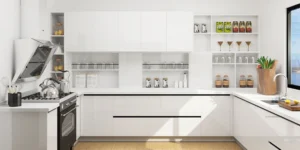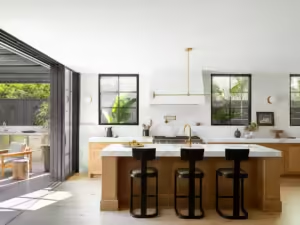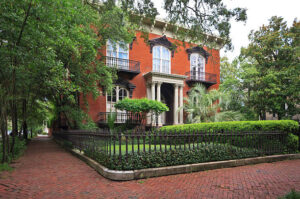Mid Century Interior Design Labor: A Guide to Timeless Style and Practicality?
Mid-century modern design has captured hearts for decades with its clean lines, functional style, and organic materials. Originating in the 1940s and 50s, mid century interior design remains one of the most influential styles in home decor. This article explores the elements of mid-century modern interiors, the labor involved in achieving the look, and how to incorporate this timeless style into modern homes.
Understanding Mid Century Interior Design
The mid-century modern aesthetic evolved during post-war optimism, focusing on simplicity, functionality, and natural materials. Key features include:
- Open floor plans.
- I am emphasizing the horizontal and vertical.
- I am blending natural and synthetic materials.
Critical Characteristics of Mid-Century Modern Style
- Clean Lines and Minimalism
- Mid-century modern design is known for its uncluttered look. Furniture features sleek, simple lines with minimal ornamentation.
- Functional Furniture
- Every piece in a mid-century modern space has a purpose. This style rejects unnecessary embellishments, focusing on furniture and decor that serve a functional role.
- Integration with Nature
- Large windows, open spaces, and a connection with the outdoors are essential in mid-century design. Designers often used wood, leather, and stone alongside new synthetic materials to connect the indoors with nature.
- Geometric and Organic Forms
- Furniture often features unique, sculptural shapes—such as the famous Eames lounge chair or Noguchi coffee table. These forms add visual interest without overwhelming the space.
Essential Elements of Mid-Century Modern Decor
- Color Palette
Traditional mid-century interiors use earthy tones—like olive green, mustard yellow, and burnt orange—complemented by bold accents. This balance keeps the space inviting and warm.
- Materials
Materials used in mid-century interiors vary from natural (like wood and leather) to modern (like plastic and metal). Teak wood, often stained a warm brown, is a popular choice.
- Furniture Choices
Furniture in this style often has thin, tapered legs, clean lines, and low profiles. Examples include the famous Eames chair, Saarinen’s tulip table, and the Mies van der Rohe Barcelona chair.
- Open Layouts
Mid-century homes typically feature open layouts, which promote a flow between spaces. This openness often integrates with large windows that bring in natural light.
The Role of Mid Century Interior Design Labor
Creating an authentic mid-century look can be a labor-intensive process. Whether restoring vintage pieces or replicating the classic aesthetic with new furniture, careful planning and skilled labor are essential.
- Renovation and Restoration Labor
Restoring vintage furniture often requires a high level of craftsmanship. Mid-century pieces may need sanding, staining, or reupholstering to maintain their iconic look.
- Flooring and Wall Treatments
Hardwood floors are a staple in mid-century interiors. Installing, refinishing, or maintaining these floors can require skilled labor. For walls, paneling or painting in classic mid-century colors completes the look.
- Lighting Installation
Mid-century modern lighting is distinctive, often incorporating pendant lamps, arc lamps, and chandeliers with geometric forms. Installation requires electricians familiar with both the style and electrical work.
- Custom Woodwork and Furniture Building
Many homeowners opt for custom-built woodwork to achieve an authentic mid-century look. Hiring skilled carpenters to replicate mid-century craftsmanship is a significant part of the design labour.
Mid Century Interior Design Labor: Planning and Budgeting
When planning a mid century interior design project, it’s essential to budget for labour costs. Here are some considerations to keep in mind:
- DIY vs. Professional Labor
DIY projects can be a cost-effective way to incorporate mid-century elements; however, professional labour is often necessary for more complex tasks like restoration, custom woodwork, and electrical work.
- Material Costs
Choosing high-quality materials is essential for creating a lasting mid-century look. Vintage or high-quality reproductions of teak, walnut, and leather can be expensive but make a significant difference in achieving an authentic aesthetic.
- Labor for Authenticity
Finding artisans who specialize in mid-century design can add value to your project. Experienced professionals are skilled at replicating the craftsmanship and style that defines this era.
Steps to Incorporate Mid-Century Modern Style in Your Home
- Select Key Furniture Pieces
Start by investing in one or two iconic mid-century pieces, such as a lounge chair or coffee table. These pieces will set the tone for the room.
- Choose a Muted Color Palette
To create an authentic mid-century feel, use earthy colors for more prominent elements like walls or floors, and add pops of bold color with accessories.
- Use Geometric Patterns Sparingly
Geometric patterns, particularly in textiles, are a common mid-century feature. Incorporate them through rugs, pillows, or curtains to avoid overwhelming the space.
- Invest in Quality Lighting
Lighting is critical to the mid-century look. Go for pendant lights or arc floor lamps with metallic finishes to add drama and elegance.
Challenges in Mid Century Interior Design Labor
Labour costs for mid-century design projects can add up quickly, especially if you want to restore or replicate vintage furniture. Here are some common challenges:
- Sourcing Skilled Craftsmen
- The mid-century design relies heavily on skilled craftsmanship. Finding professionals familiar with mid-century techniques may require some research and higher costs.
- Maintaining Design Consistency
- Maintaining design consistency throughout a project requires a clear plan and attention to detail. Professional designers and decorators familiar with mid-century style can ensure a cohesive look.
- Restoration and Refinishing
- Restoring vintage furniture requires specialized labor, from reupholstering to wood refinishing. Budgeting for these services is essential for working with authentic vintage pieces.
Conclusion: Creating a Mid-Century Haven
Achieving a mid-century modern interior is a labor of love that combines simplicity, functionality, and a blend of organic and geometric shapes. The journey from sourcing materials to finding skilled artisans is well worth the effort, as the result is a timeless, versatile, and inviting home that echoes a golden era in design. Whether renovating, restoring vintage pieces, or recreating mid-century elements, the effort invested in mid century interior design labor brings this iconic style’s enduring charm and sophistication into your home.



